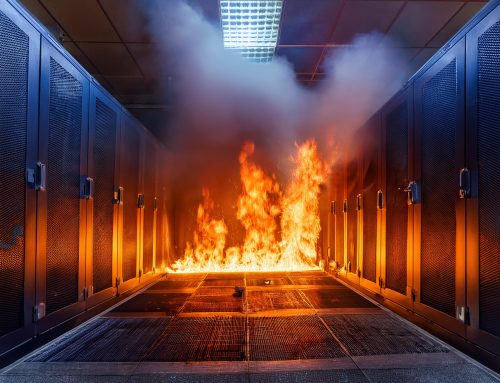Distribution warehouses across the nation are running at full speed to meet the excessive demands of consumers in the midst of the current global pandemic crisis. It’s never been more important for these vast warehouses to stay fully operational and safe.
Distribution warehouse fires can cause severe damage halting critical operation. Even in the midst of the current chaos, fire protection has never been more important for major distribution warehouses. Understanding the most common causes of warehouse fires can help building managers put a plan in place to prevent these destructive blazes.
Arson
According to the NFPA’s Report on Structure Fires in Warehouse Properties, nearly one-fifth, or 18 percent, of warehouse fires were intentionally set. These fires accounted for 32 percent of the direct property damage in warehouse properties; the highest of all causes of warehouse structure fires.
While little can be done to prevent an individual from catching fire to a facility, warehouse managers can develop a fire safety plan and integrate fire safety into the training of all employees. Make it evident that the facility is aware of fire dangers and has stringent plans in place. Hopefully this awareness in conjunction with a proper fire prevention plan will deter arsonists.
Electrical distribution & Lighting equipment
The NFPA reports that fires caused by electrical distribution and lighting equipment were the second leading cause of warehouse fires. Electrical failure or malfunction was the leading factor contributing to the ignition of warehouse fires, as well as in contributing to direct property damage and to civilian injuries. In fact, electrical distribution and lighting equipment accounted for the most civilian injuries.
Electrical distribution and lighting equipment refer to wiring/related equipment, lamp/bulb or lighting, transformers and power supplies, or cords/plugs.
Heating equipment
Among the top three causes of warehouse fires, heating equipment comes in third, accounting for 8 percent of all fires. If you think about it, it’s a dangerous combination. Heating a large facility requires a powerful means to do so. Combine any type of heat source with so many flammable materials, and it’s a dangerous combination.
Heating equipment includes types of space heaters, confined fuel burner or boiler fire, central heating system, confined chimney or flue fire, or any other types of equipment used to heat a warehouse. As is the case with so many other buildings that use them, space heaters are the most common heating equipment to catch fire or cause fire.
What can be done to prevent warehouse fires?
Warehouses vary by size, types of materials stored, and more, making these facilities particularly challenging from a fire protection standpoint. Their contents and layouts are more conducive to fire spread and present obstacles to manual fire suppression efforts. Thankfully, advances in fire suppression and increased regulation have caused warehouse fires to decline quite a bit over the past 30 years.
A well-designed fire sprinkler system is your best defense against warehouse fires. Along with a properly designed sprinkler system, the building should be equipped with a detection system that includes smoke detectors and a fire alarm system; all working as pieces of a larger puzzle.
For businesses, conducting a risk assessment is also helpful in identifying all potential fire hazards and putting safety measures in place as needed.
A licensed fire protection company can help you to develop a fire suppression system and plan that’s right for your specific warehouse. Be sure to work only with fire protection companies that are well-versed and knowledgeable in all local and state fire codes. Fire Systems, Inc. has been working with Atlanta-based warehouses for over 30 years. As an all-services fire protection company, the experts at Fire Systems can design, install, inspect, and repair all aspects of your fire protection system. Call today at 770-333-7979 or visit our website for more information on how we can help.






